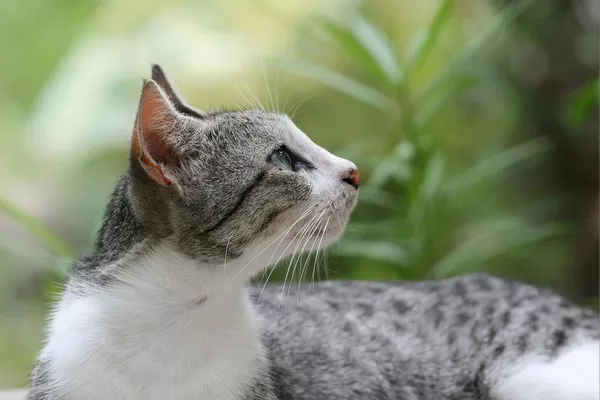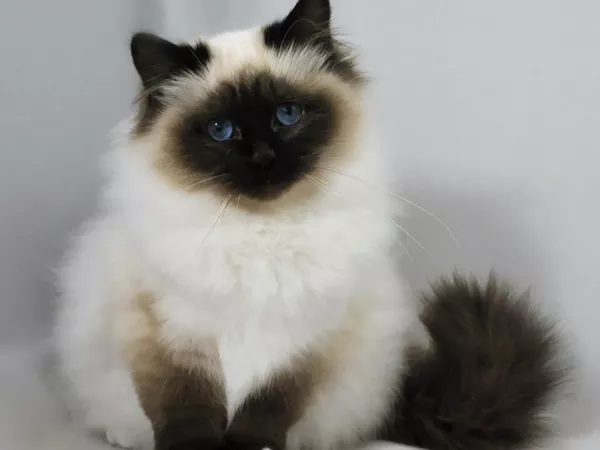As devoted cat owners, we often find joy in sharing moments and meals with our feline companions. While it’s tempting to offer them a taste of our own culinary delights, not all human foods are safe for cats. Understanding the list of foods that cats should avoid is crucial to ensuring their well-being and preventing potential health issues. In this comprehensive guide, we will explore various human foods that can pose risks to our feline friends, delving into the reasons behind these restrictions and offering insights into fostering a safe and healthy dietary environment for our beloved cats.
The Unique Feline Digestive System
1. Carnivorous Wonders: Unveiling Cat’s Dietary Needs
Cats are obligate carnivores, meaning their diets primarily consist of meat. Unlike omnivores, such as dogs and humans, cats lack specific enzymes necessary for breaking down certain substances found in plant-based foods. Their digestive systems are designed to efficiently process and extract nutrients from animal proteins. Recognizing this fundamental aspect of feline biology is key to understanding why some human foods can be problematic for cats.
2. Toxic Threats: Cats and Specific Food Compounds
Certain compounds found in human foods can be toxic to cats due to their unique metabolic processes. For instance, substances like theobromine, caffeine, and certain artificial sweeteners can have adverse effects on a cat’s health. Recognizing these potential threats helps us make informed decisions when it comes to sharing our meals with our feline companions.
Foods Cats Should Avoid: A Comprehensive Guide
1. Chocolate: The Bittersweet Danger
Chocolate, a beloved treat for many humans, contains theobromine, a stimulant that affects the central nervous system. While humans can metabolize theobromine, cats process it much more slowly, making them more susceptible to its toxic effects. Ingesting chocolate can lead to symptoms such as vomiting, diarrhea, increased heart rate, and even seizures. Dark chocolate and baking chocolate pose higher risks due to their elevated theobromine content.
2. Caffeine: A Stimulant Too Far
Caffeine, present in coffee, tea, energy drinks, and some medications, is another stimulant that can be harmful to cats. Cats are highly sensitive to caffeine, and ingestion can lead to restlessness, increased heart rate, tremors, and, in severe cases, fatal outcomes. It’s essential to keep caffeinated products out of reach and avoid allowing cats access to beverages containing caffeine.
3. Onions and Garlic: Allium Family Woes
Onions and garlic, members of the Allium family, contain compounds that can cause damage to a cat’s red blood cells, leading to a condition known as hemolytic anemia. Even small amounts of onion or garlic powder can be harmful over time. Symptoms may include weakness, lethargy, and pale gums. It’s crucial to avoid feeding cats any foods seasoned with these ingredients and to be cautious when preparing meals.
4. Alcohol: A Toxic Libation
Alcohol, even in small amounts, is dangerous for cats. Their bodies lack the enzymes needed to metabolize alcohol, leading to rapid absorption and toxic effects. Ingesting alcohol can result in symptoms such as vomiting, disorientation, lethargy, and, in severe cases, respiratory failure. Accidental alcohol exposure, such as spilled drinks, should be promptly cleaned up to prevent cats from licking or ingesting the substance.
5. Grapes and Raisins: The Mystery Toxin
The exact toxic component in grapes and raisins remains unidentified, but their ingestion can lead to kidney failure in cats. Even small amounts can pose a risk, and symptoms may include vomiting, lethargy, and decreased urine production. The severity of the reaction can vary among individual cats, making it essential to avoid offering grapes or raisins as treats.
6. Xylitol: The Silent Sweetener Threat
Xylitol, a sugar substitute used in various sugar-free products, is highly toxic to cats. Ingesting xylitol can cause a rapid release of insulin, leading to hypoglycemia (low blood sugar). Symptoms include vomiting, loss of coordination, and seizures. In severe cases, xylitol toxicity can be fatal. Ensure that all sugar-free products are stored securely, and be vigilant about checking ingredient labels.
7. Dairy Products: Lactose Intolerance in Cats
While the image of a cat lapping up a bowl of milk is a common trope, many adult cats are lactose intolerant. Lactose, the sugar found in milk, requires an enzyme called lactase for proper digestion. Many cats, particularly after weaning, experience a decline in lactase production, leading to difficulty digesting dairy products. Feeding cats milk or dairy-based treats can result in gastrointestinal upset, including diarrhea and stomach discomfort.
8. Bones: Not Always a Safe Chew
While cats are natural hunters and may enjoy gnawing on bones, certain types of bones pose risks. Cooked bones, especially those from poultry, can splinter and cause choking or internal injuries. It’s advisable to avoid giving cats cooked bones and opt for specially designed cat-friendly dental treats or toys instead.
9. Raw Meat and Fish: Bacterial Dangers
While cats in the wild may consume raw meat, domestic cats are susceptible to bacterial contamination. Raw meat and fish can harbor harmful bacteria such as Salmonella and E. coli, posing risks of foodborne illnesses for both cats and their human companions. Cooking meat thoroughly eliminates these risks, making it safer for cats to consume.
10. High-Fat Foods: Pancreatic Perils
Foods high in fat, such as fatty cuts of meat and fried items, can lead to pancreatitis in cats. Pancreatitis is the inflammation of the pancreas and can result in symptoms like vomiting, abdominal pain, and lethargy. Maintaining a balanced and low-fat diet is essential for preventing pancreatitis in cats.
Tips for Responsible Pet Parenting
1. Awareness: Know Your Feline Friend’s Sensitivities
Understanding the unique dietary needs and sensitivities of your cat is the first step toward responsible pet parenting. Be aware of the potential dangers associated with certain human foods and make informed decisions about what to include in your cat’s diet.
2. Vet Consultations: Seek Professional Guidance
Regular veterinary check-ups provide an opportunity to discuss your cat’s diet and any potential concerns. If you have questions about specific foods or are considering introducing new elements to your cat’s diet, consult with your veterinarian to ensure the choices align with your cat’s health needs.
3. Secure Storage: Keep Harmful Foods Out of Reach
Preventing access to potentially harmful foods is crucial. Store human foods securely, keeping them out of reach of curious feline companions. This includes securing trash cans to prevent cats from scavenging for leftovers.
4. Watch for Signs of Distress: Be Vigilant
Closely monitor your cat for any signs of distress or changes in behavior. If you suspect your cat has ingested a toxic substance or is experiencing adverse effects, seek immediate veterinary attention.
5. Educate Family and Guests: Share Knowledge
Ensure that everyone in your household, as well as visitors, is aware of the foods that are off-limits for cats. Educating those around you helps create a safe environment for your feline friend.
6. Read Labels: Scrutinize Ingredients
When purchasing packaged or processed foods, scrutinize ingredient labels to identify any potentially harmful substances. Be particularly vigilant with products labeled as sugar-free, as they may contain xylitol.
7. Responsible Treats: Choose Feline-Friendly Options
When offering treats to your cat, opt for products specifically designed for feline consumption. There are numerous cat-friendly treats available that provide a tasty and safe alternative to human foods.
Conclusion
As devoted cat owners, ensuring the health and well-being of our feline companions is a top priority. Understanding the human foods that cats should avoid is a crucial aspect of responsible pet parenting. By recognizing the unique digestive system of cats, the potential dangers of specific food compounds, and the importance of a balanced and tailored diet, we can create a safe and nurturing environment for our beloved cats.
Responsible pet parenting involves awareness, education, and a commitment to providing our feline friends with a diet that aligns with their biological needs. Through informed decision-making, regular veterinary consultations, and a vigilant approach to food safety, we can foster a strong bond with our cats while safeguarding their health for years to come.



























